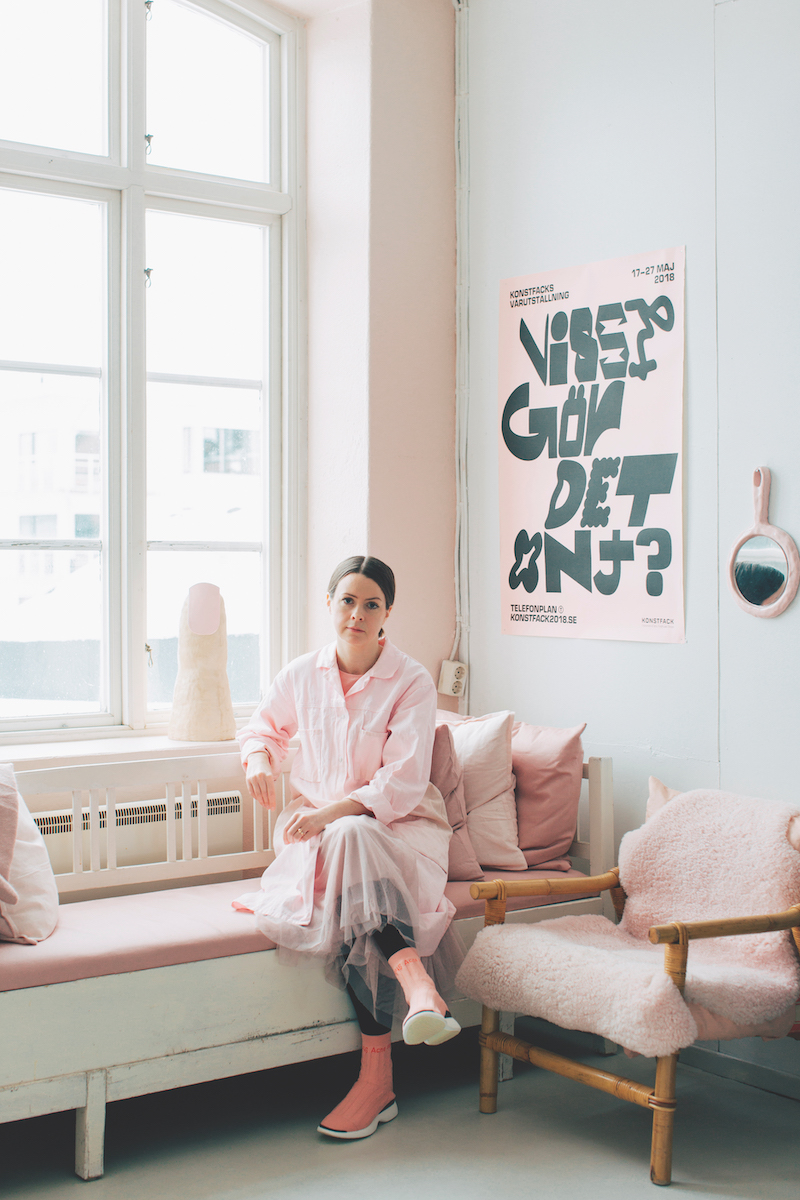Fanny Ollas in her studio in Gustavsberg, Sweden. Courtesy: Fanny Ollas.
Where did your interest in art come from?
I have created for as long as I can remember and started to sew when I was around 12. After a few years in the fashion industry working mainly in front of a computer, I was longing to work with my hands again so I took a summer course in ceramics. After that I was hooked on the material. I was fascinated by the way I could create whatever I wanted from a lump of clay. I took a year off to study a foundation year in ceramic art and after that I had the courage to quit my job and move on to higher education and a MFA at Konstfack University of Arts, Crafts and Design in Stockholm.
You have a background in fashion, but changed careers in 2015 to focus on ceramics and textiles. What prompted this change?
I worked at a big Swedish global fashion company and was tired of the fast spinning commercial wheels. I felt that I had to get back to my roots and to express myself creatively. Ceramics offered me a new start and an opportunity to work hands on again with an idea from the beginning to the end.
You say your interest in ceramics and textiles is grounded in psychology and the emotional relationship we have with everyday objects.
Can you elaborate on this further?
Everyday objects are such strong archetypes or symbols and almost everyone has a relationship to them. Because of that I think when you add something unexpected or make them bend or sit, we suddenly read human qualities or emotions into them and sometimes it’s easier to relate to an object than to put words down about your own feelings.
Your works are playful and have quite a feminine aesthetic, yet they also have a sort of sad demeanour – slumped over as if defeated. How do you think your objects respond to their surroundings, and in turn how do your audiences respond to them?
My intention with my objects is to try to capture what it is to be human. They often wear skirts or other details and sometimes they are sort of self portraits. Other times they portray a feeling or a situation. I think that life often balances between tragedy and comedy and I try to capture that gap in between. I think most people read my objects as characters and I often get a lot of responses that they think they are cute but at the same time have another layer with a deeper meaning.
What is it about textiles and ceramics that interests you?
They are my two materials. I know them in and out and I find it very interesting to combine them because they are so different but at the same time I treat them the same way in my process. I also think that textiles adds a reference to clothes and the body which makes the objects become more human. I often start by sketching and then move on to build my objects. I hand build all my pieces with the technique of coil building. While working, the object often gets a life in itself and the end result can be something different from what I first had in mind. I try to go with the feeling and where the clay takes me.

